5 of the Creepiest Crawlies
5 of the Creepiest Crawlies
For many people, any insect is automatically creepy, disgusting, terrifying, or repulsive (or all four at once). Some in this category are classified as having entomophobia, the fear of insects, and will refuse to freely go outside in case they happen to see an insect. Others are okay with certain harmless insects that they don’t mind seeing while on a walk or a picnic. No matter how you feel about the general category of insects, there are some species that are just too disturbing or dangerous for even the most benevolent of nature-lovers. There are plenty of wild-looking insects in the far reaches of the world, but we don’t have to travel far to find some creepy crawlies that look horrifying and have their own dangerous abilities to boot. Let’s look at five of the creepiest crawlies in the Americas, ranked by their appearance and counting down to the most disturbing-looking of all. Entomophobes beware!
5. Assassin Bug
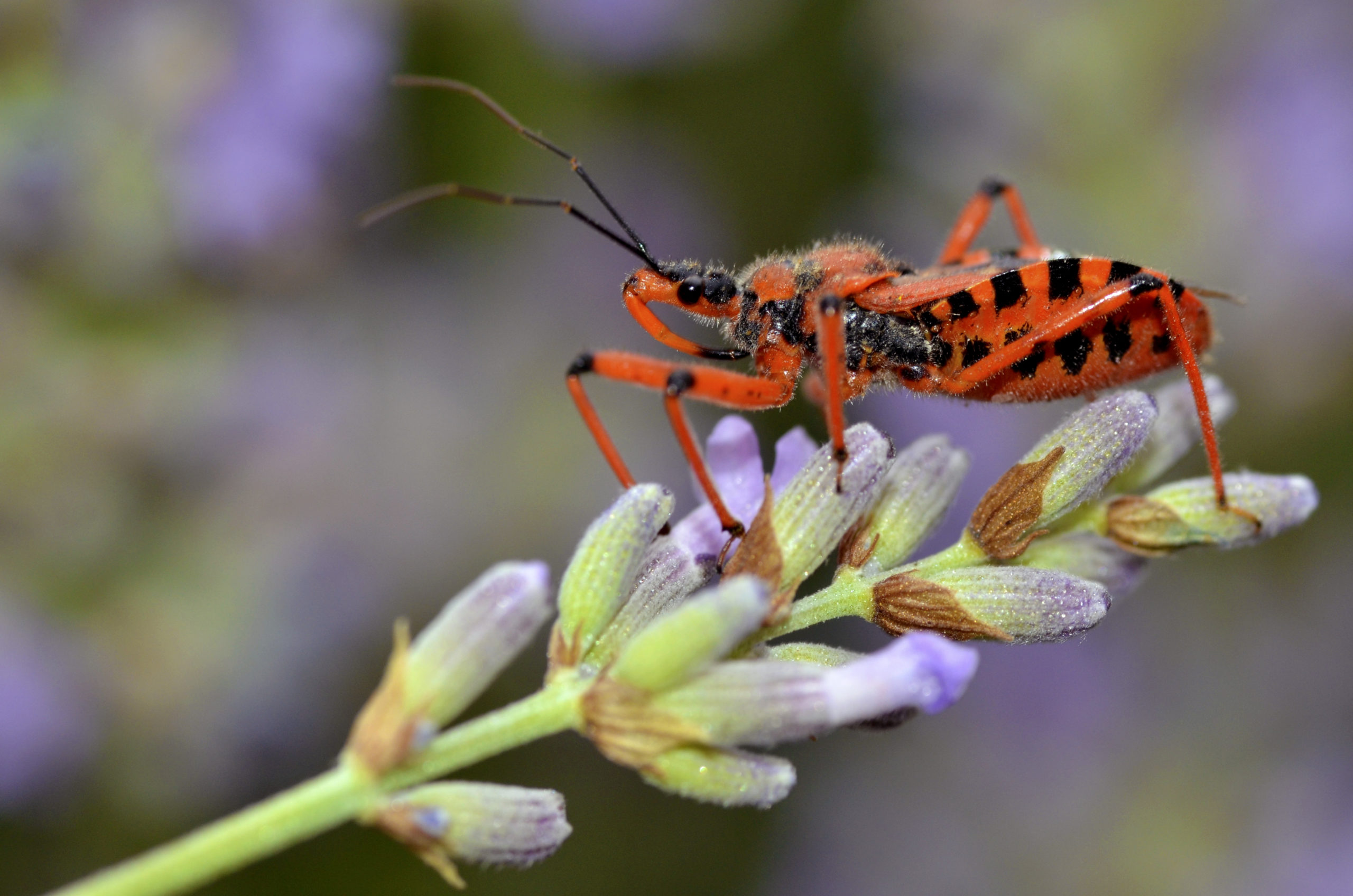
With a deadly name like this, it’s no wonder that experts warn people to stay away from this species. While the assassin bug can deliver an extremely painful bite, it is not fatal and usually does not have lasting effects. This beast grows up to 1.5 inches long and has a circular saw-like feature on the back of its head. Most species are dark-colored, but they also come in lighter varieties. When they are not flying, their wings fold flat against their bodies, like many other insects. But the most interesting feature of assassin bugs – and perhaps the reason behind their name – is how they feed upon their prey.
These insects have a long proboscis, a lengthy mouthpart similar to that of a mosquito. Since they need to drink their food through this proboscis, the assassin bug needs to liquify its food first. They enjoy many types of invasive pests, like Japanese beetles and caterpillars. The assassin bug will bite the pest, inject its venom into the insect, and then wait as the venom starts to liquify the tissues and inner organs of the pest. The assassin bug can then drink from the incapacitated pest and enjoy its horrifying meal. The good news is that this venom will not liquify our tissues or anything else, but the bad news is that their bite is still extremely painful. Assassin bugs typically like to stay outside to be constantly near their prey, but they can invade houses and buildings if there are any cracks and gaps. If you happen upon an assassin bug, the best thing to do is to keep moving and not touch it at all.
4. Camel Cricket
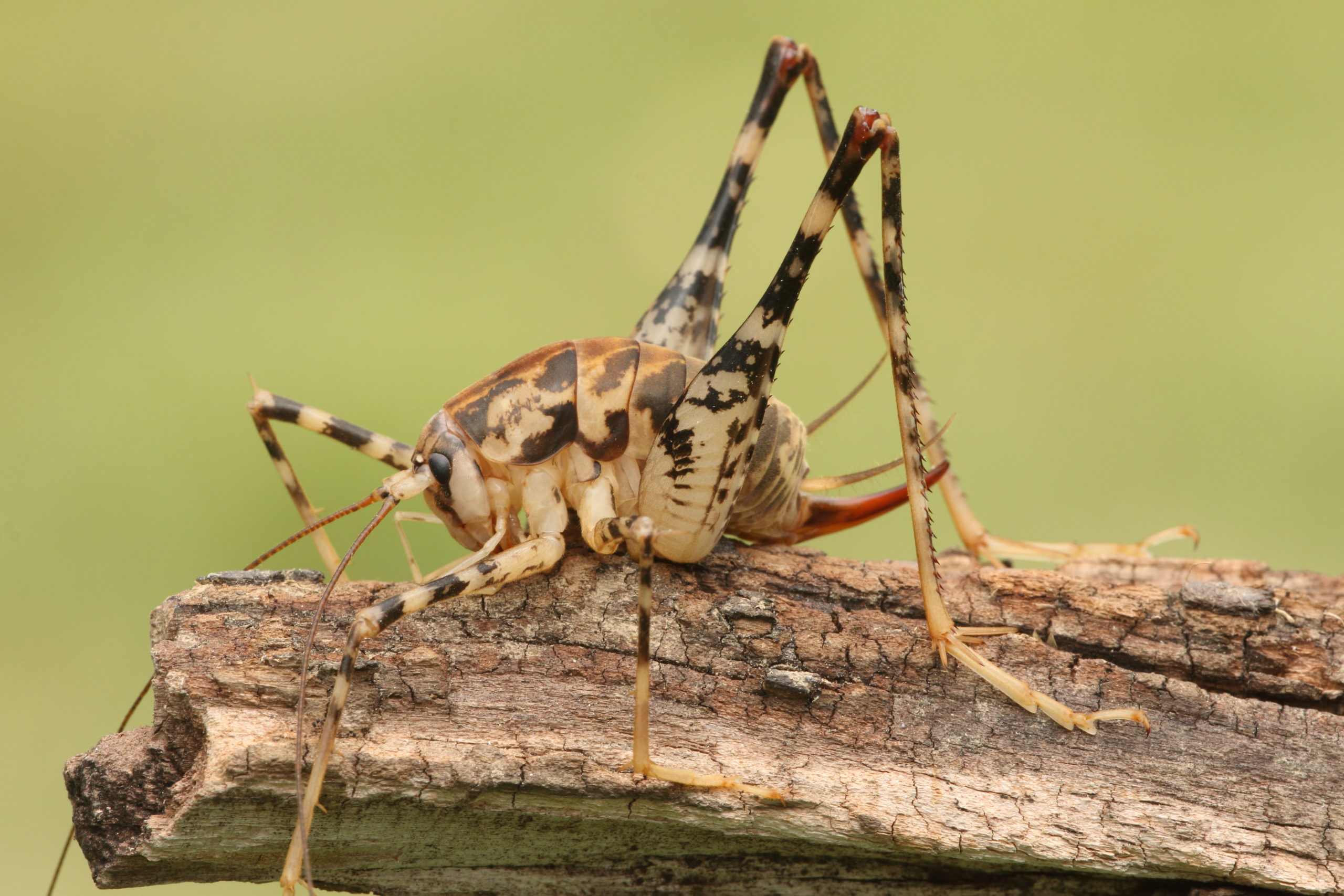
Camel crickets are likely the most well-known pest on this list, but that does not make their appearance any less creepy. These are some of the largest common crickets, about 1.5 inches long, and are brown with dark markings. Their name comes from the slight humpback they have, which is not nearly as noticeable when compared to their giant legs. Crickets already have long legs to help them jump, but camel crickets use their exceptionally long legs to jump at least 3 feet high. Jumping is their only defense mechanism, so they will jump erratically when they believe they are close to a threat; this is a terrifying event when you accidentally get too close.
They do not have wings, which means they cannot chirp like other crickets and can therefore go into hiding more easily. Camel crickets, also called cave crickets, live in spaces that are damp, dark, and cool as much as possible. They like to stay under logs and other large objects outdoors, and will stay in basements and garages if they happen to make their way inside a home. They can live for one to two years if conditions are good and they have enough food. Camel crickets will eat fungus, paper, dead insects, and general organic matter. They are not poisonous, do not carry any diseases, and lack the mouth parts to bite humans. Due to these facts, you may be wondering why camel crickets made this list. To that, we say: have you seen a camel cricket in real life? Creepy!
3. Bullet Ant
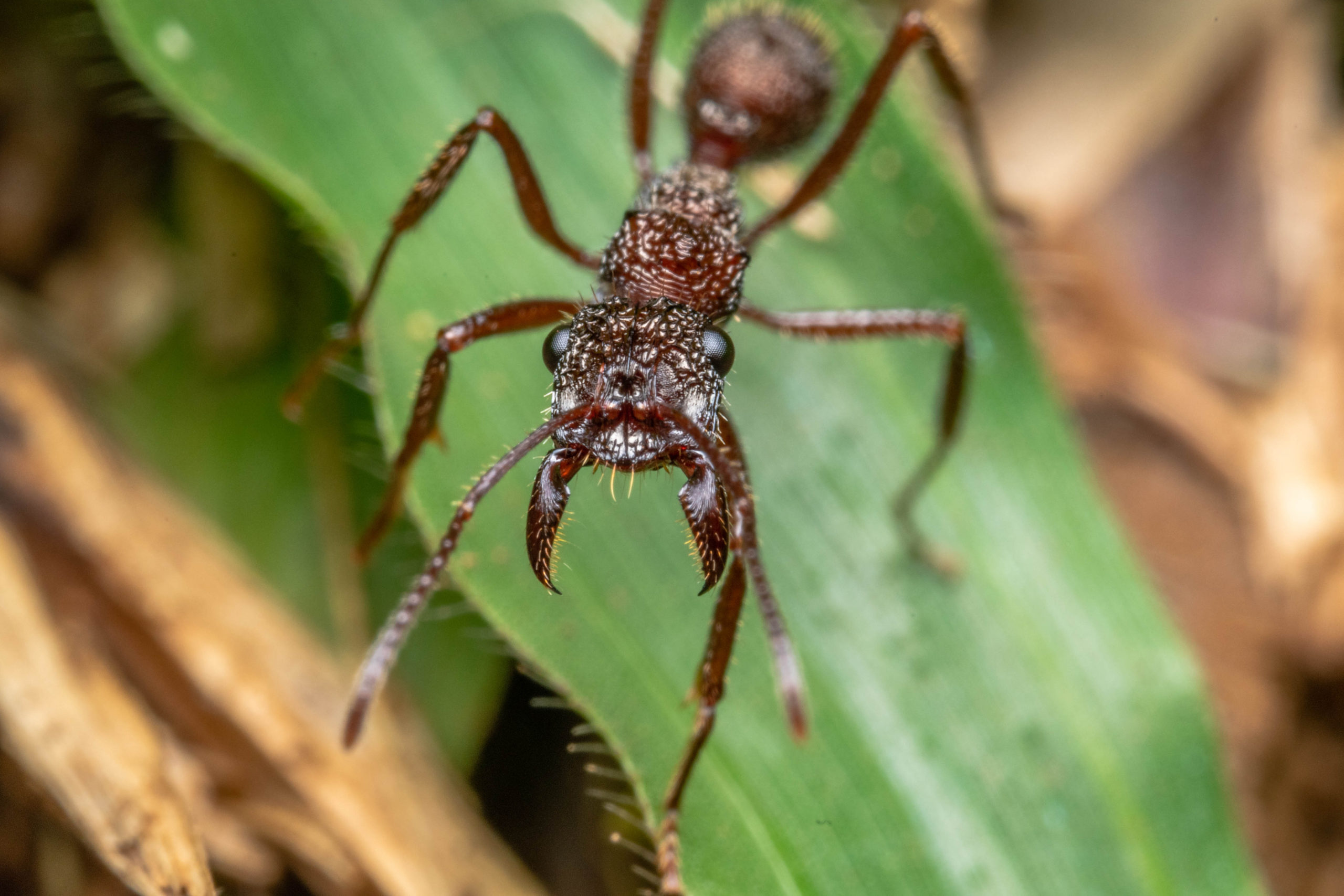
This species is the only one in this blog that is not commonly found in the U.S. Bullet ants are inhabitants of the tropical rainforests in Central and South America. They are about an inch long, and are either red or black in color. Their diet consists of small pests and nectar, and they live in a typical ant colony that is housed in a nest and controlled by a queen who is the only one that can lay eggs. Since all of this sounds typical of most ant species, what’s the problem? This question is easily answered by taking a look at the giant mandibles protruding from the faces of every bullet ant, just waiting to inflict pain on a potential threat to their colony.
Bullet ants are not aggressive and do not seek out people or animals to bite, though their venom can quickly kill insects. But if their nest is disturbed or if they are roughly handled, they will not hesitate to attack. These ants have a “one-two punch” of their own, as they will follow each bite with a sting. Both the bite and the sting are said to be some of the most painful of the insect class. People who have received these bites and stings are in pain for at least 24 hours afterward, and some have compared it to being shot with a nail gun. As if that wasn’t bad enough, the sting is not an isolated attack. When a bullet ant stings, it simultaneously releases pheromones that prompt its colony to attack the same threat and inflict a world of hurt. These nightmarish-looking ants only live for 3 months, but they spend those few months having one of the most threatening presences in the animal kingdom.
2. House Centipede
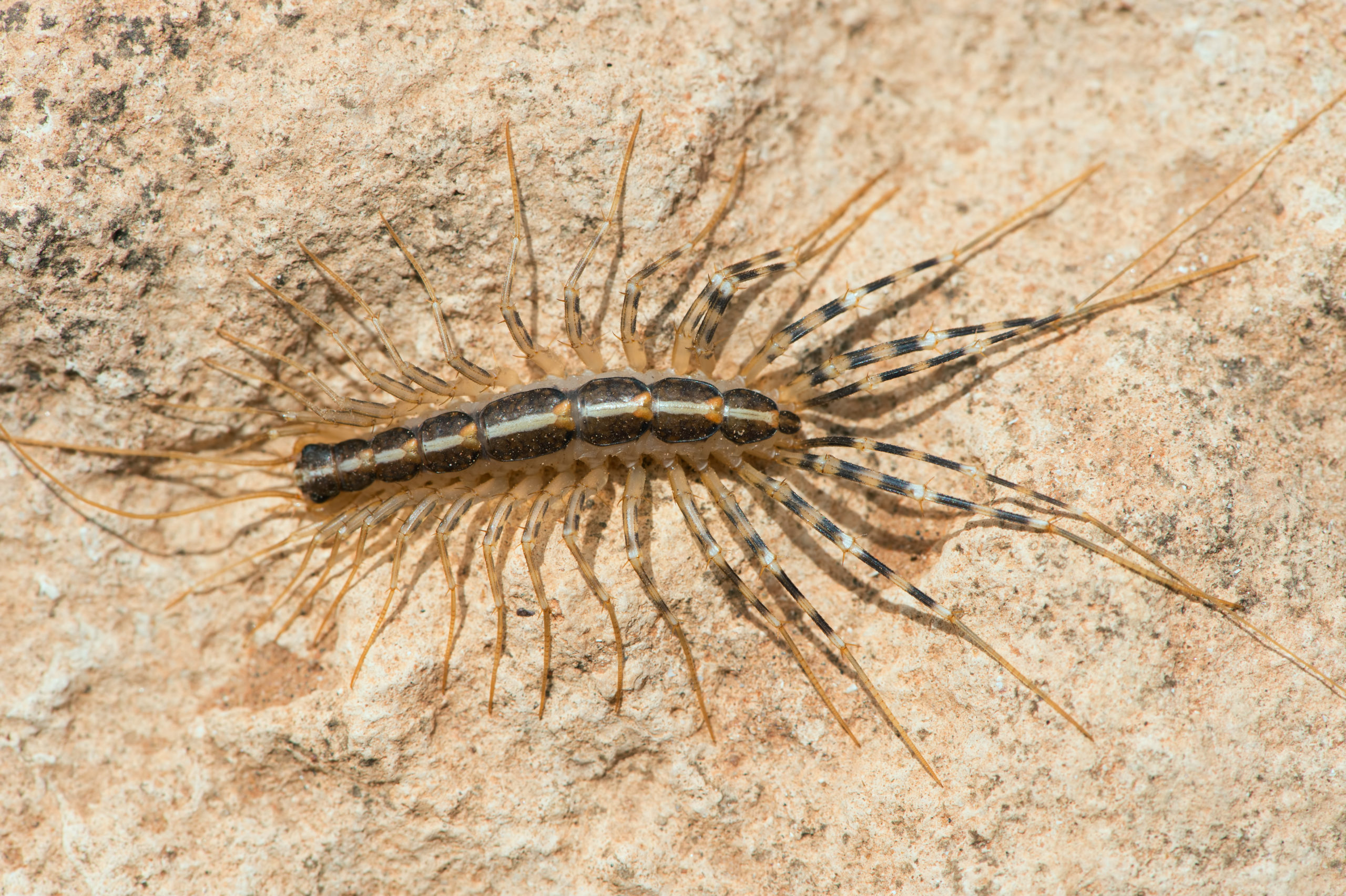
With this pest’s appearance in mind, it is not comforting that the word “house” is in its name, since it is not welcome in any home at any time. Although it only has 15 pairs of legs, the house centipede can move quickly and scurry away from threats faster than many pests. It is yellow-brown with three dark stripes, and can grow up to half of an inch long. The sight situation varies among each subspecies, since house centipedes can either have compound eyes, sensitive eyes, or no eyes at all. This is why they use their sensitive antennae to assess their surroundings and find their prey more easily.
House centipedes live for at least a year, and survive by staying hidden and only emerging at night to feed. They can be considered “beneficial” due to their diet. They enjoy smaller pests, like flies, spiders, silverfish, and ants. Since they are nocturnal and tend to stay in the basement or garage, house centipedes typically find nighttime prey more easily. Their poisonous jaws immobilize the smaller pest before they can begin eating. But if they are handled by any creature larger than them, they will use these jaws to bite their predator. The thought of this alien-looking pest biting a person is chilling, but their bite is not terrible compared to bullet ants or assassin bugs. It is likened to the pain level of a bee sting, and the redness and pain will typically lessen after a couple days. But if the bite doesn’t heal and an infection occurs, it is best to seek medical attention and explain that this wild pest is the cause behind the bite.
1. Scorpionfly
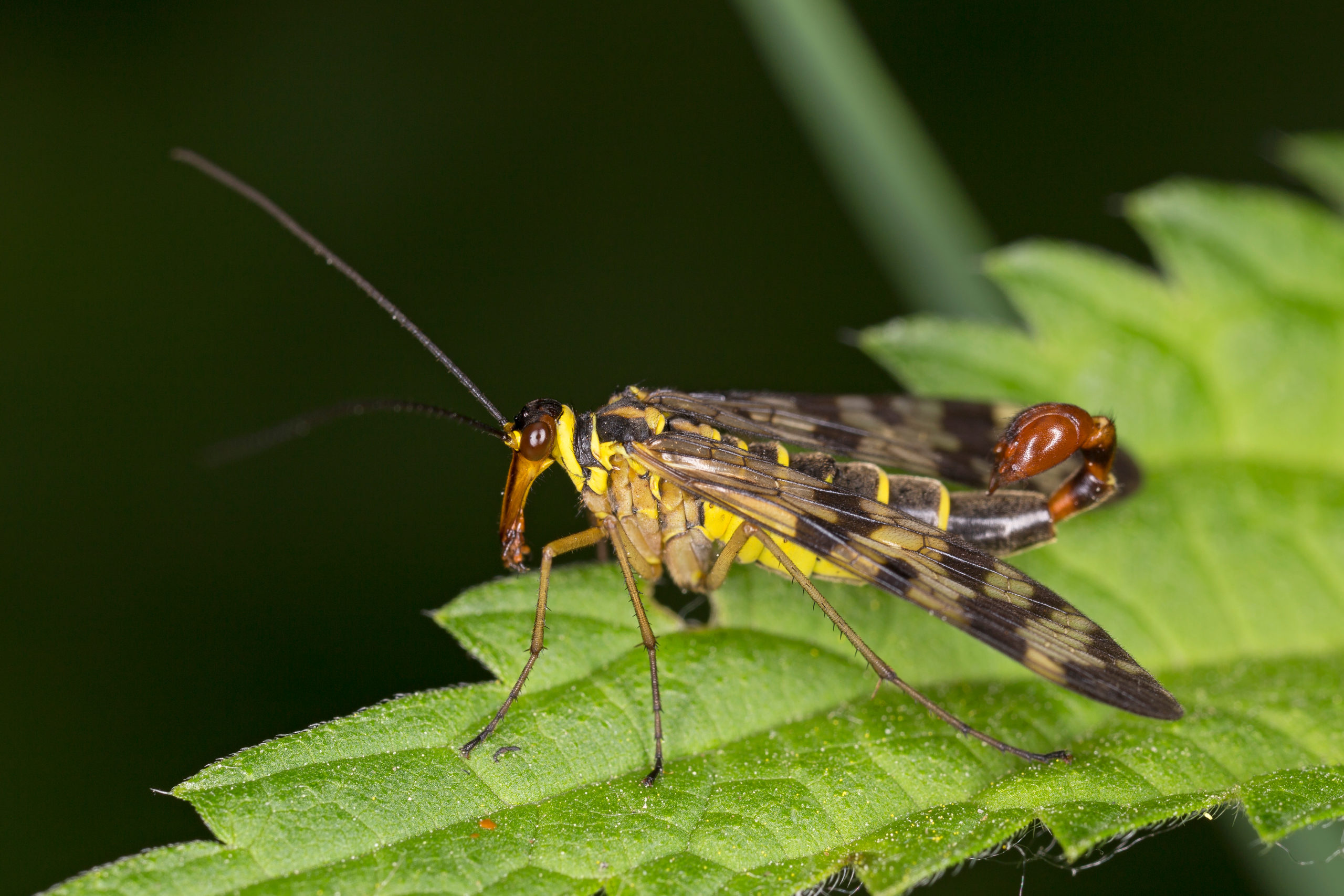
If everyone was asked to draw the most terrifying insect they could imagine, the scorpionfly would probably be the average result. It is a true horror for the eyes. These insects are black and yellow, and have the combination of physical traits that justify its name. Scorpionflies have the typical scorpion tail, but the barb on the end is thankfully harmless. Its pointy nose is used for feeding on dead organic matter, and its large, unnerving eyes are compound and therefore allow it to see almost every angle around them. They are only 3 centimeters long, which is how they can hide in the grass and damp soil that they enjoy as living conditions. True to many insects, scorpionflies are most active from late spring through early fall. Their eggs are laid in soil for both protection and proximity to their food.
These creatures mainly eat dead insects, and the males will even gift a deceased insect to a female as a pre-mating gift! This is all well and good, but the creepiest factors of scorpionflies do not stop at their monstrous appearance. They have a useful, albeit disturbing, role in the world of forensic entomology these days. Researcher Natalie K. Lundgreen found that scorpionflies are the first on the scene (literally) when a human corpse is outside, and they will stay the longest of any pest that gathers there. This information can be useful to forensic specialists as they determine the time of death and the circumstances of the body. If the bone-chilling appearance of the scorpionfly didn’t already make you want to forget it exists, the pest’s unsettling career in forensics is just another fact to haunt your brain late at night.
Don’t Let Pests Creep You Out!
These critters may be some of the creepiest ones around, but it is not ideal to have any pests in your home or business. Besides the creepiness of having small pests in your space, some of them can bring even more harm. Rodents and roaches are some of the most common disease-infested pests, and any food that is touched by a pest is completely contaminated. This is exactly why our caring Pointe technicians complete a thorough inspection at the beginning of every service. We do not leave any pest problem untreated, and your complete satisfaction with our services is our top priority. If you want efficient pest control that is tailored to fit your specific pest problems, contact us for a free quote today!
Citations
Assassin bugs. (n.d.). Missouri Department of Conservation. Retrieved February 7, 2023, from https://mdc.mo.gov/discover-nature/field-guide/assassin-bugs
Assassin bugs facts & information. (n.d.). Pest World. Retrieved February 7, 2023, from https://www.pestworld.org/pest-guide/occasional-invaders/assassin-bugs/
Bullet ant facts. (n.d.). Fact Animal. Retrieved February 7, 2023, from https://factanimal.com/bullet-ant/
Camel crickets. (n.d.). Pest World. Retrieved February 7, 2023, from https://www.pestworld.org/pest-guide/occasional-invaders/camel-crickets/
Centipedes. (n.d.). Pest World. Retrieved February 7, 2023, from https://www.pestworld.org/pest-guide/occasional-invaders/centipedes/
McNally, V. (2015, January 22). Scorpion flies are super attracted to dead bodies, could help solve murders. The Mary Sue. Available at https://www.themarysue.com/scorption-fly-detectives/ (Accessed on February 8, 2023).
Scorpion fly. (n.d.). Wildlife Trusts. Retrieved February 7, 2023, from https://www.wildlifetrusts.org/wildlife-explorer/invertebrates/other-insects/scorpion-fly
Request a Free Quote Today
(We do not share your data with anybody, and only use it for its intended purpose)


